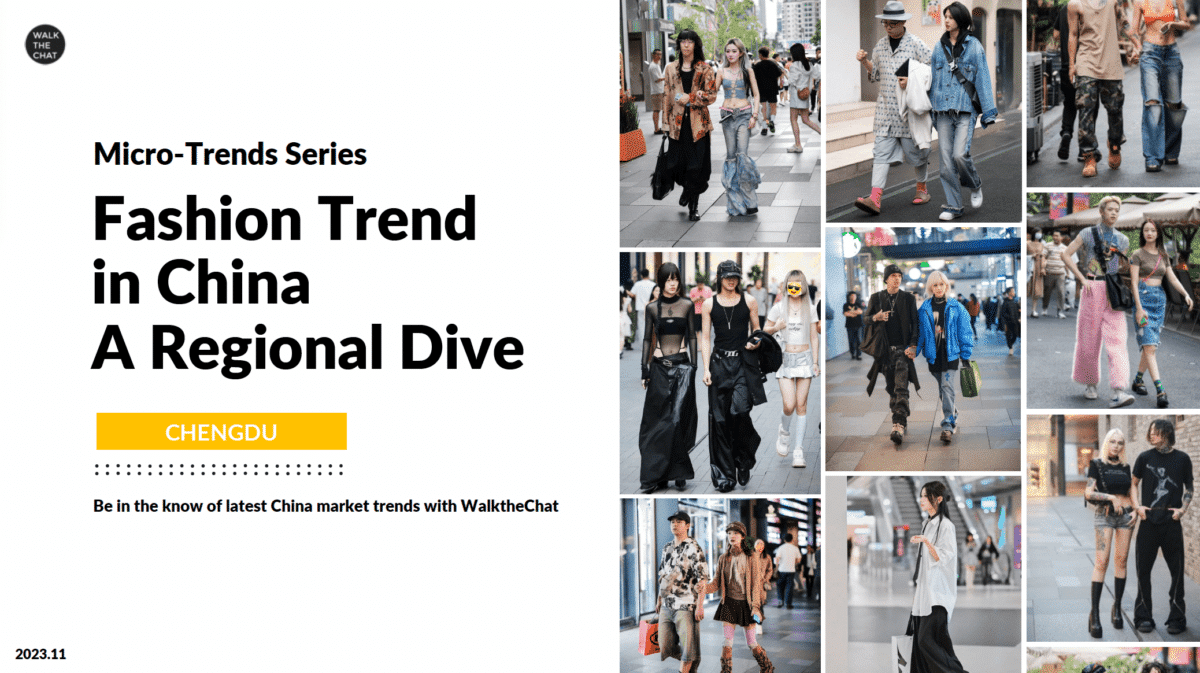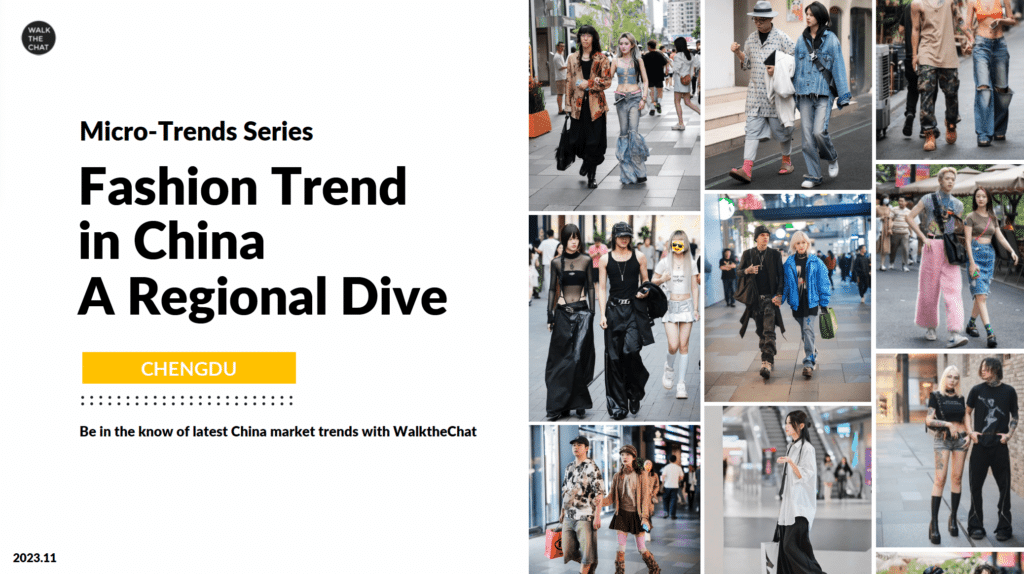
Chengdu, with its population of 21 million, is rapidly emerging as a pivotal hub for global fashion brands. This city is an attractive alternative to the oversaturated markets of Shanghai and Beijing, offering fresh opportunities in the fashion industry.
This analysis delves into the burgeoning fashion trends within the dynamic Sichuan-Chongqing region. Anchored by Chengdu’s rich historical heritage and its pulsating contemporary culture, our exploration reveals a unique style narrative that sets the city apart:
- Cultural Fusion in Fashion: Chengdu’s distinct historical and cultural landscape, influenced by Ba-shu culture, thriving hip-hop scenes, and active LGBTQ communities, significantly shapes its fashion trends.
- Current Fashion Leaders: The city’s style preferences are currently dominated by iconic brands such as Balenciaga, Stussy, Rick Owens, BAPE, Supreme, and EVISU.
- Emerging Labels to Watch: Rising stars like Andersson Bell and Mugler are gaining traction, signaling a shift towards more avant-garde and innovative fashion choices.
- Untapped Market Segments: There is a significant, yet underexplored, opportunity in targeting male luxury consumers in Chengdu.
- Expert Insights: We offer exclusive insights from local buyer stores, key opinion leaders (KOLs), and industry experts, providing a comprehensive understanding of Chengdu’s fashion landscape.
The analysis is empowered by Doris, WalktheChat In-house A.I. Social Listening Tool.
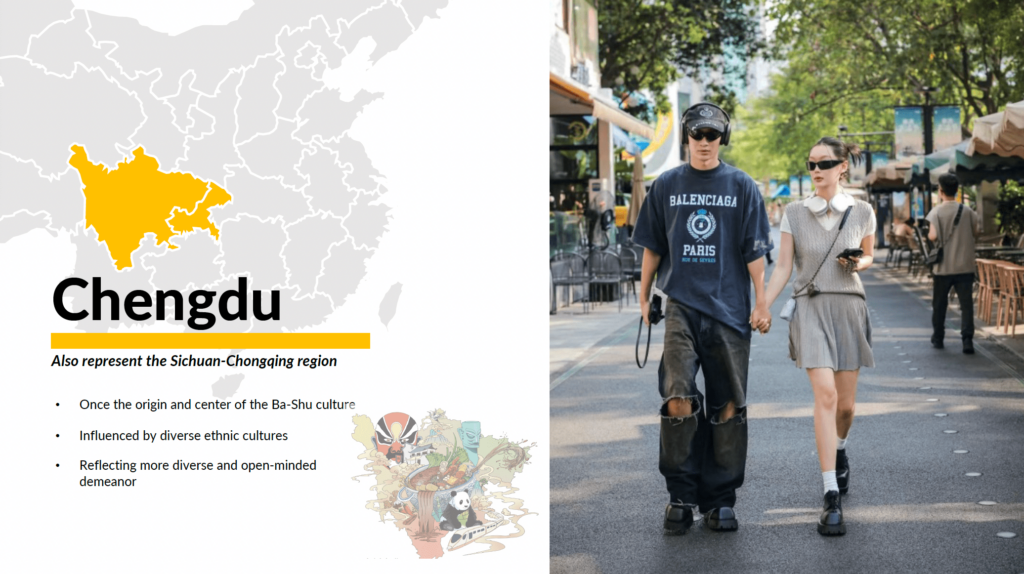
Chengdu, with its iconic pandas, renowned spicy hot-pot, and the breathtaking landscape of the Western Sichuan Plateau, epitomizes the quintessential charms of China.
Chengdu’s past as the birthplace of the Ba-Shu culture (巴蜀文化) showcases its rich history of embracing different ways of life. This area, influenced by the colorful and diverse Southwestern ethnic groups and blended with the mainstream Han culture, has shaped Chengdu into a city that values diversity.
This open-minded spirit is clearly reflected in the way its people express themselves through fashion. Chengdu’s style is a vibrant mix of its multicultural legacy with a modern twist, making it an attractive and dynamic market for global luxury brands that appreciate a blend of heritage and innovation.
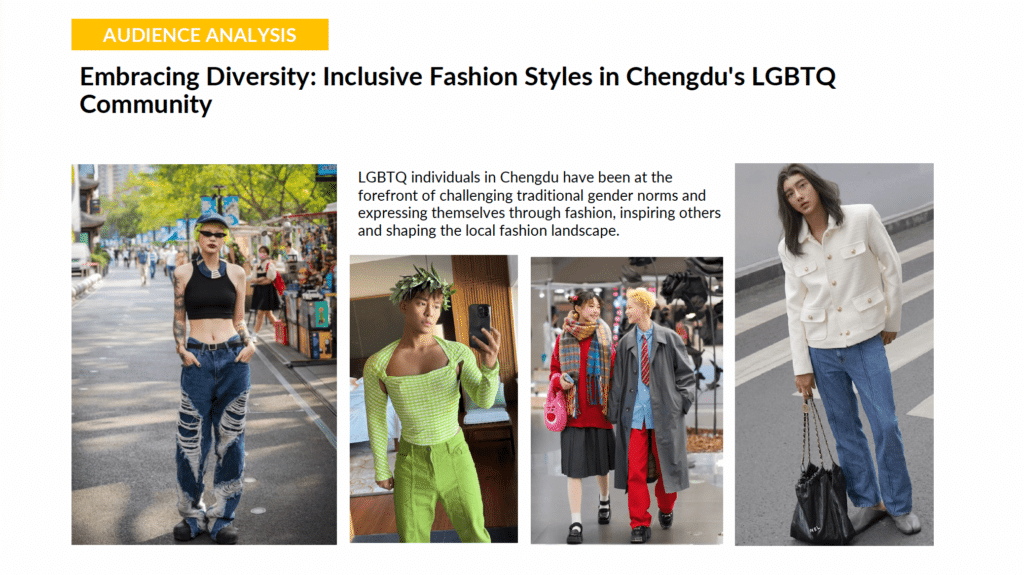
In Chengdu, the embrace of diversity and inclusion within the LGBTQ community is not just a social movement but a powerful force in the fashion domain.
This progressive city is pioneering the redefinition of gender norms through fashion, leading to a cultural metamorphosis that influences local and global style narratives. As such, Chengdu’s LGBTQ community is not merely participating in fashion; they are actively reshaping it, inspiring broader trends, and inviting a dialog on the role of fashion in societal transformation.
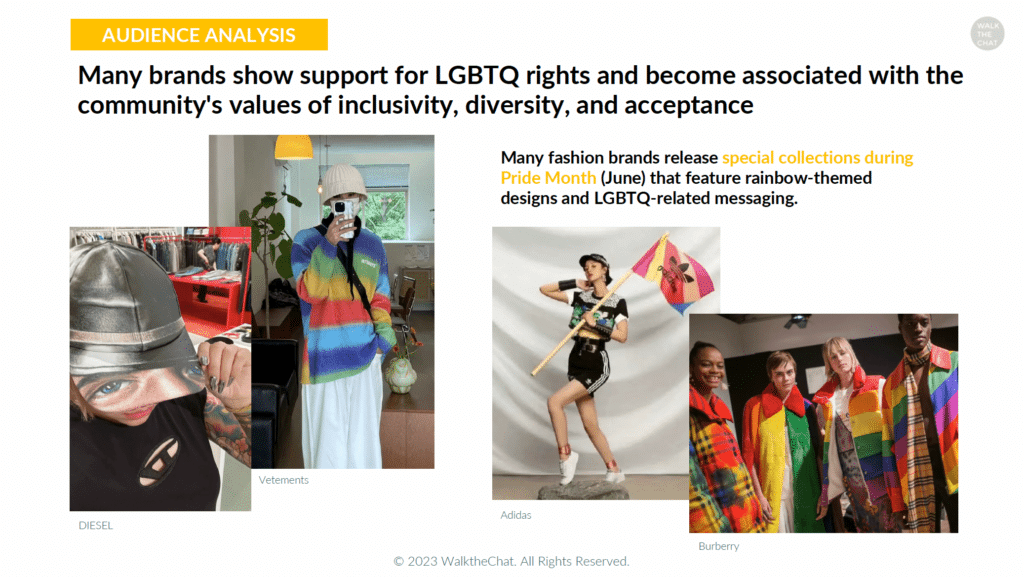
Sichuan-Chongqing area’s dynamic cultural tapestry offers fertile soil for the fashion and luxury sectors, providing endless inspiration and opportunities for brands to connect with a deeply rooted and vibrantly evolving culture.
Numerous esteemed fashion labels, including Burberry, DIESEL, Adidas, and Vetements, have aligned with the values of the LGBTQ community—embracing inclusivity, diversity, and acceptance. By launching special collections featuring rainbow motifs and messages of LGBTQ solidarity during Pride Month, these brands strategically position themselves within a progressive and socially conscious marketplace.
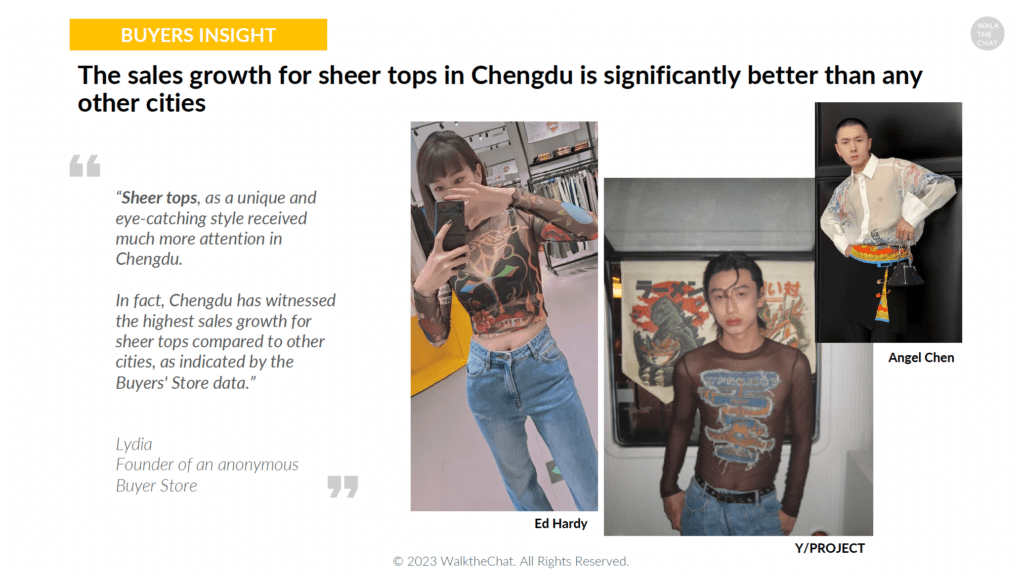
Chengdu’s discerning audience demonstrates a strong preference for pivotal and edgy designs.
This trend is evidenced by the notable sales growth for sheer tops in the city, outpacing other regions. Lydia, the founder of a prominent buyer store, corroborates this data, indicating a unique market inclination towards daring and transparent aesthetics in fashion.
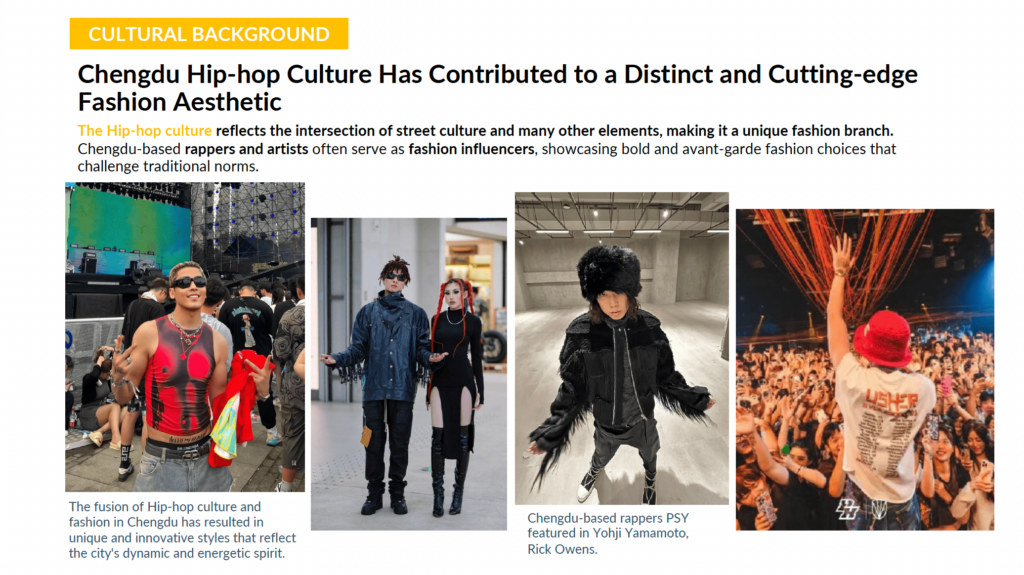
The prominence of hip-hop culture in Chengdu and Chongqing stands as a distinctive cultural pillar, with many of China’s leading rappers, such as GAI, Bridge, and PSY from this region.
Chinese hip-hop, while drawing from Western influences, is distinguished by its unique approach, emphasizing subtle social commentaries, youth culture, personal struggles, and traditional brotherhood. This distinct local flavor has a marked influence on China’s fashion scene, inspiring styles that echo these deeper cultural themes.
Chengdu’s rappers and artists transcend their musical renown, emerging as pioneers in fashion. Their edgy and pioneering attire challenges conventional norms, mirroring the region’s innovative ethos. Often, this takes the form of an eclectic fusion of classic hip-hop attire with local fashion sensibilities, including Chinese traditional elements, forging a unique cultural signature.
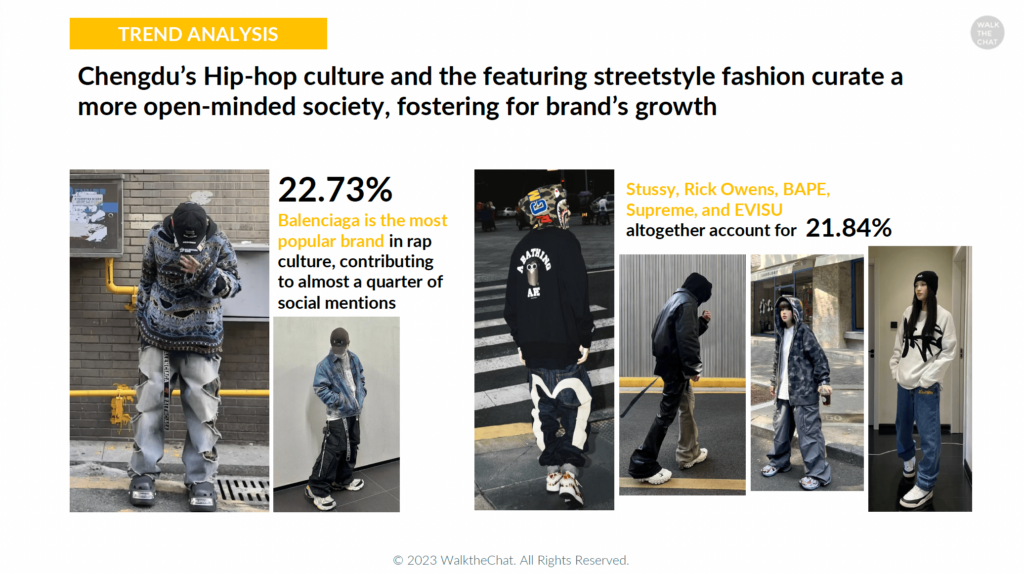
Chengdu’s hip-hop scene, with its signature street style, cultivates an open-minded consumer base conducive to brand growth.
Balenciaga reigns supreme in this arena, commanding nearly a quarter (22.73%) of social mentions. Together, Stussy, Rick Owens, BAPE, Supreme, and EVISU contribute to just over 21%, reflecting their strong foothold in the market.
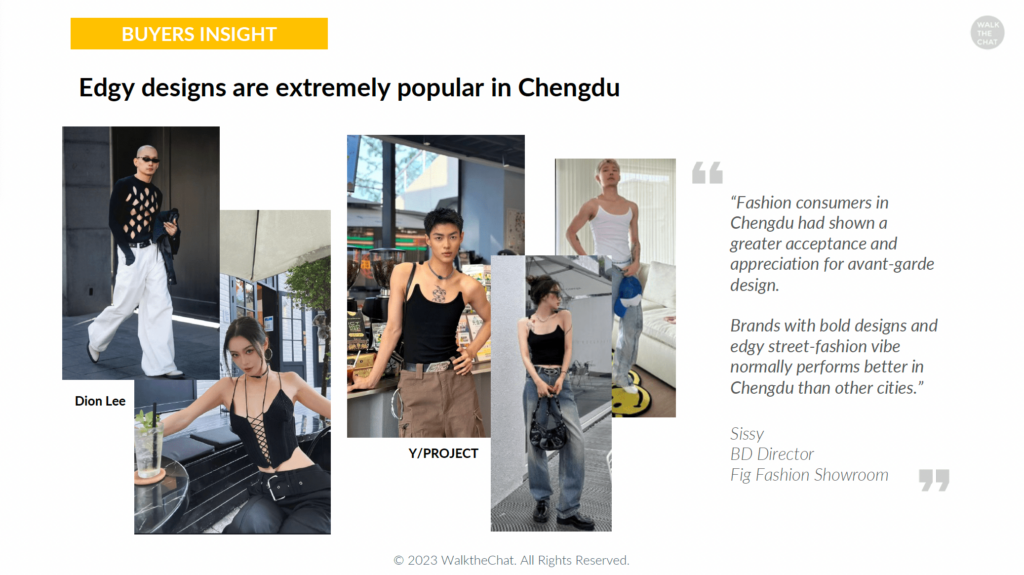
Sissy, representing Fig Fashion Showroom, notes that Chengdu has a strong preference for edgy designs. Brands that embody bold aesthetics and a street-fashion edge tend to outperform in Chengdu’s market compared to other cities.
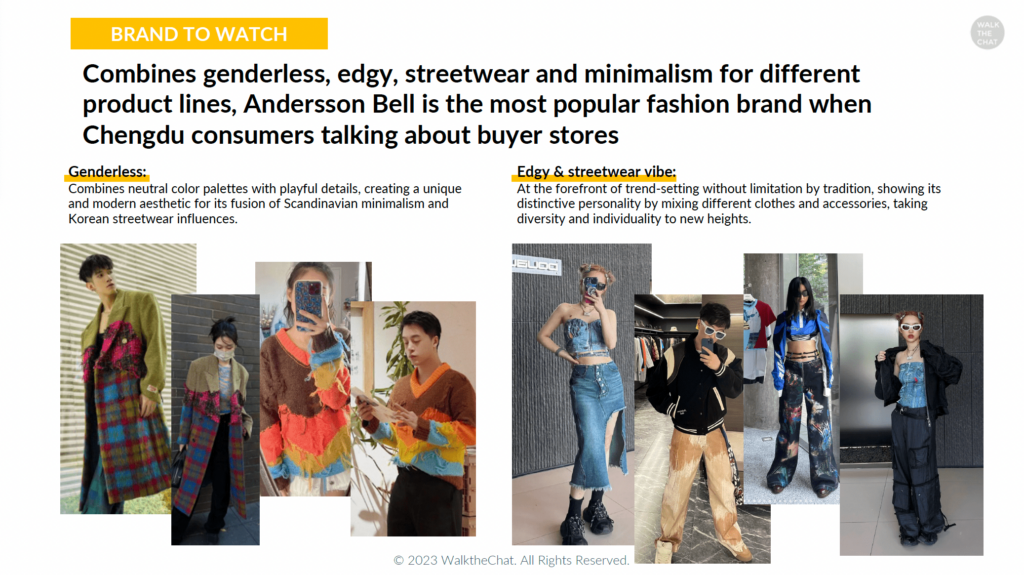
Andersson Bell is a contemporary fashion brand that hails from Seoul, South Korea. Founded in the mid-2010s, the brand has quickly become known for its eclectic mix of Scandinavian minimalism and Korean urban streetwear aesthetics. Andersson Bell stands out for its gender-neutral designs, reflecting a modern take on fashion that defies traditional gender norms.
Andersson Bell is notably recognized by Chengdu consumers for its strong presence in buyer stores and as a distinguished designer brand, reflecting its impactful resonance within the local market.
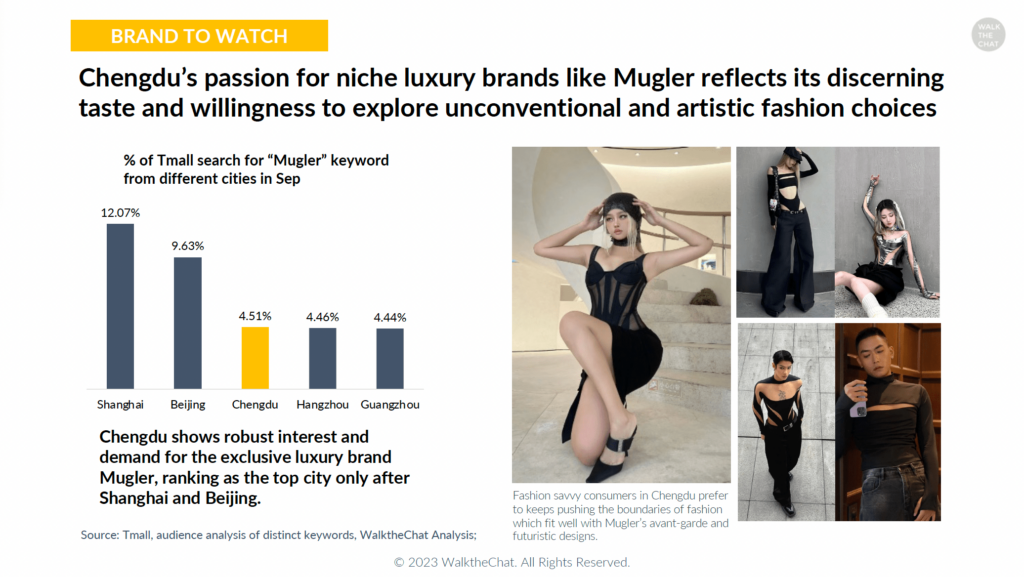
Mugler, a French fashion brand renowned for its avant-garde and structural designs, is often characterized by sharp silhouettes, innovative materials, and a futuristic aesthetic. This brand also enjoys a strong demand in Chengdu, placing it as a leading market just behind Shanghai and Beijing.
Chengdu’s affinity for niche luxury brands such as Mugler showcases its refined taste and openness to avant-garde fashion.
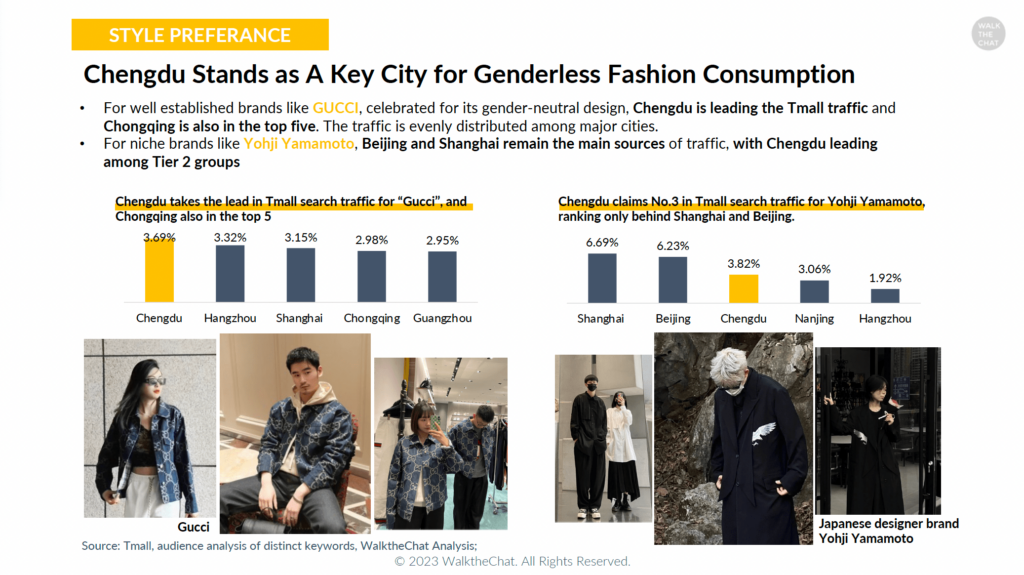
Chengdu emerges as a pivotal market for gender-neutral fashion, with brands such as GUCCI seeing substantial Tmall traffic from the city, a leader in this category alongside Chongqing in the top five.
While traffic for established brands is well-distributed across major cities, niche labels like Yohji Yamamoto draw mainly from Beijing and Shanghai, with Chengdu as a frontrunner in the Tier 2 city segment.
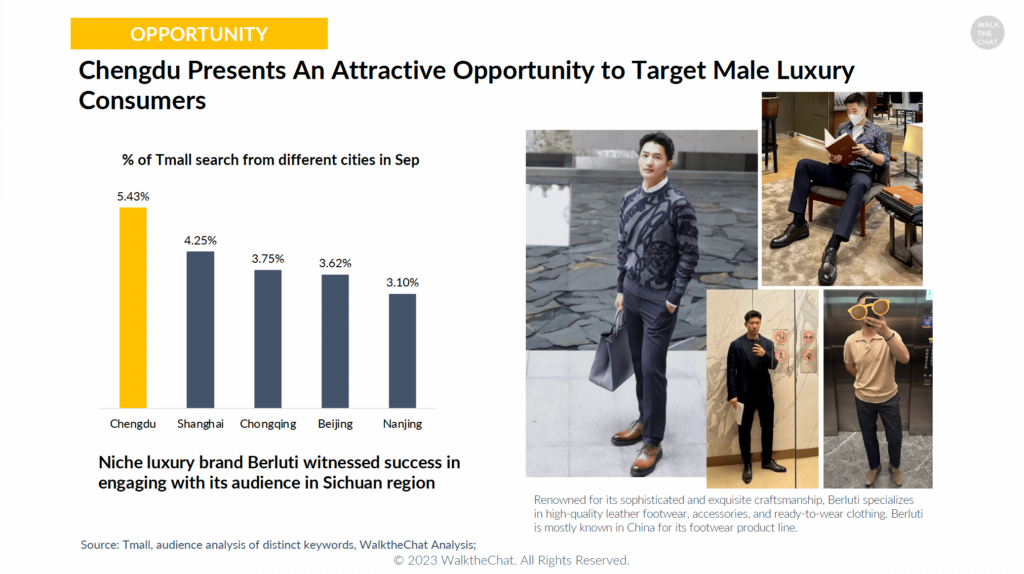
Besides, Chengdu represents a significant untapped market for male luxury consumer engagement.
The niche luxury brand Berluti has seen noteworthy success in the Sichuan region, with Chengdu securing 5.32% of the search traffic on Tmall, remarkably outperforming traditional frontrunners such as Shanghai and Beijing.
Conclusion
Chengdu is a burgeoning hub for global fashion, distinct from the saturated markets of Shanghai and Beijing. Its 21 million residents are shaping a unique fashion scene, influenced by rich cultural heritage and contemporary movements like hip-hop and LGBTQ community.
With a penchant for both iconic and emerging labels, and a notable gap in the male luxury market, Chengdu presents a golden opportunity for international brands. Tapping into this diverse and dynamic market requires nuanced understanding and strategic engagement, where the insights of local experts and consumer trends can guide successful market entry and growth.
WalktheChat is an AI-powered China Marketing Agency supercharged with an industry-leading AIGC and tech team.
Follow us on LinkedIn for more news and insight about China’s digital marketing and luxury landscape.
More reports available upon request.

